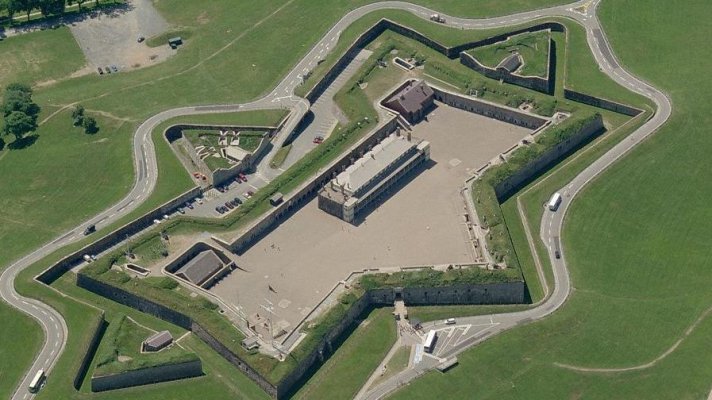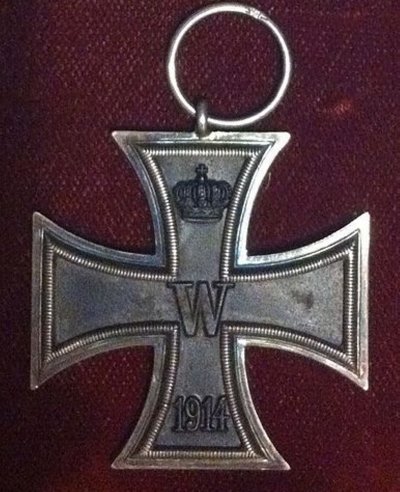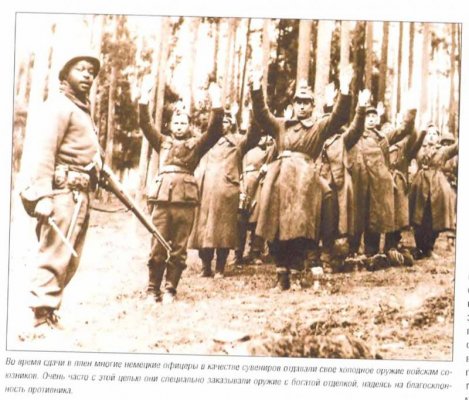Вы используете устаревший браузер. Этот и другие сайты могут отображаться в нём некорректно.
Вам необходимо обновить браузер или попробовать использовать другой.
Вам необходимо обновить браузер или попробовать использовать другой.
Рудольф Гесс, "его" EK-II и как этот EK-II стал его
- Автор темы JapanX
- Дата начала
С кратким пояснением, что вот де был законфискован храбрым шотландом-канониром во время ареста беженца в Шотландии.
Confiscated by Royal Canadian Artillery when Hess was arrested in Scotland.
История (как и крест) довольно потрясающая.
Рудольфик-то и в обычной (назовём это так) жизни со своими EK не особенно светился, а вот в Bf-110 второклассника всё же взял.
Видимо, "на сувениры"
Confiscated by Royal Canadian Artillery when Hess was arrested in Scotland.
История (как и крест) довольно потрясающая.
Рудольфик-то и в обычной (назовём это так) жизни со своими EK не особенно светился, а вот в Bf-110 второклассника всё же взял.
Видимо, "на сувениры"

Откуда же в цитаделях шотландских кресты гессовские и кто этот храбрый шотланд, что с него крест тиснул?
Насилу разыскал в архивах статейку из The Chronicle Herald за 2008 год (они её почему-то застенчиво подтёрли )
)
Наиболее эпические моменты я жирненьким для фалеристов навыделял
In search of Rudolf Hess’s Iron Cross
Peter Duffy
This war story involves a Halifax man named Walter Campbell, a quartermaster sergeant with the Royal Canadian Artillery during the Second World War.
Walter and his buddies were shipped overseas to Britain where they underwent extensive training, destined to take part in the invasion of Sicily in July 1943. (As it turned out, Walter didn’t quite make it; the troopship he was on was torpedoed during the landings and he ended up in a hospital.)
But my story about Walter, who died 23 years ago, has nothing to do with that little caper and everything to do with Rudolf Hess, deputy fuehrer to Adolph Hitler and the third-most-powerful Nazi in Germany, after Hermann Goering.
On the night of May 10, 1941, Hess flew alone to Britain and landed in Scotland, giving rise to a mystery that’s still debated.
The most popular theory is that he was on a personal mission to try and broker peace with Britain.
The Nazis were hugely embarrassed and disowned Hess. The British thought him insane and locked him up for life.
Crazy or not, Hess was a brave man. Serving as an infantryman in the First World War, he’d won Germany’s highest award for valour, the Iron Cross (second class).
And that’s where Walter Campbell of Halifax comes into the picture. Or so the story goes.
The way I’ve been hearing it, Walter was in Scotland at the time, not far from where Hess’s plane crashed, and went to the site, looking for a souvenir.
What he found, or so I’m told, was nothing less than Hess’s Iron Cross.
Long story short, Walter survived the war and returned to Halifax, settling down with Elsie, his British war bride.
Shortly before his death, he put all his military bits and pieces in a box and as many other veterans have done, he donated them to the Army Museum at the Halifax Citadel.
What were the chances Hess’s medal was in that same box? (это наш журналист очень верно подпустил )
)
Intrigued, I contact members of Walter’s family but come away with conflicting stories.
None remembers actually seeing the medal but some do recall hearing him mention it.
Not ready to let go of the story, I phone museum curator John Harrison and ask if we can do a search.
The former career infantry officer shares my excitement.
If the story’s true, this would be a big deal for the museum. The medal would be a major attraction, not to mention a financial coup. It could be worth at least $10,000 to a serious collector.
Tuesday, April 15:
John meets me at the museum entrance and leads me down the narrow corridor to one of the whitewashed display rooms.
He takes me over to a large glass case containing German weapons, military insignia and, yes, an Iron Cross second-class from the First World War, complete with a faded black-and-silver ribbon.
But there’s a problem. We can’t get at it to check for clues because the back of the display case is screwed down tight.
"We’ve had some pilfering," John apologizes.
John invites me to return the following week, when the museum carpenter will be here.
Tuesday, April 22:
I’m back again and this time, success. The carpenter opens the case, and John lifts out the Iron Cross.
We spot a small paper tag attached to the faded ribbon. It contains the museum’s identification number.
John shows it to another volunteer, Jim Derby, who scans the catalogue until he finds the appropriate entry.
This isn’t the right medal. It was donated by a Halifax woman in 1964. How disappointing!
John isn’t dismayed. He’s just remembered there’s another Iron Cross second class in the museum!
Back down the hall we go, to a large display case housing memorabilia belonging to the West Nova Scotia Regiment.
Assisted by another volunteer, Jonathan Harrison (no relation), John manages to lift down the large glass front and, sure enough, here’s another Iron Cross. Not only is this one missing a ribbon, it lacks a catalogue number.
We take turns examining the medal under a magnifying glass. All we find are the initials, J.W. No help at all.
And then, the final straw. It occurs to John that this medal was from a box of war memorabilia donated by someone in Truro.
There was a name on it, he adds, but he doesn’t recall what it was. He remembers sorting the contents of the box 2 ½ years ago.
How frustrating. My high-flying story seems to have reached the end of the road. Or has it?
I have a hunch it’s here somewhere. Walter Campbell’s box may be gathering dust on a museum shelf, still waiting to be catalogued.
Or perhaps the veteran gave his little piece of history to a relative and it’s out there in a basement somewhere. In the meantime, John has decided to remove the museum’s two Iron Crosses from display.
What with the recent pilfering and now this wild story about Rudolph Hess, better safe than sorry
Насилу разыскал в архивах статейку из The Chronicle Herald за 2008 год (они её почему-то застенчиво подтёрли
 )
)Наиболее эпические моменты я жирненьким для фалеристов навыделял

In search of Rudolf Hess’s Iron Cross
Peter Duffy
This war story involves a Halifax man named Walter Campbell, a quartermaster sergeant with the Royal Canadian Artillery during the Second World War.
Walter and his buddies were shipped overseas to Britain where they underwent extensive training, destined to take part in the invasion of Sicily in July 1943. (As it turned out, Walter didn’t quite make it; the troopship he was on was torpedoed during the landings and he ended up in a hospital.)
But my story about Walter, who died 23 years ago, has nothing to do with that little caper and everything to do with Rudolf Hess, deputy fuehrer to Adolph Hitler and the third-most-powerful Nazi in Germany, after Hermann Goering.
On the night of May 10, 1941, Hess flew alone to Britain and landed in Scotland, giving rise to a mystery that’s still debated.
The most popular theory is that he was on a personal mission to try and broker peace with Britain.
The Nazis were hugely embarrassed and disowned Hess. The British thought him insane and locked him up for life.
Crazy or not, Hess was a brave man. Serving as an infantryman in the First World War, he’d won Germany’s highest award for valour, the Iron Cross (second class).
And that’s where Walter Campbell of Halifax comes into the picture. Or so the story goes.
The way I’ve been hearing it, Walter was in Scotland at the time, not far from where Hess’s plane crashed, and went to the site, looking for a souvenir.
What he found, or so I’m told, was nothing less than Hess’s Iron Cross.
Long story short, Walter survived the war and returned to Halifax, settling down with Elsie, his British war bride.
Shortly before his death, he put all his military bits and pieces in a box and as many other veterans have done, he donated them to the Army Museum at the Halifax Citadel.
What were the chances Hess’s medal was in that same box? (это наш журналист очень верно подпустил
 )
)Intrigued, I contact members of Walter’s family but come away with conflicting stories.
None remembers actually seeing the medal but some do recall hearing him mention it.
Not ready to let go of the story, I phone museum curator John Harrison and ask if we can do a search.
The former career infantry officer shares my excitement.
If the story’s true, this would be a big deal for the museum. The medal would be a major attraction, not to mention a financial coup. It could be worth at least $10,000 to a serious collector.
Tuesday, April 15:
John meets me at the museum entrance and leads me down the narrow corridor to one of the whitewashed display rooms.
He takes me over to a large glass case containing German weapons, military insignia and, yes, an Iron Cross second-class from the First World War, complete with a faded black-and-silver ribbon.
But there’s a problem. We can’t get at it to check for clues because the back of the display case is screwed down tight.
"We’ve had some pilfering," John apologizes.
John invites me to return the following week, when the museum carpenter will be here.
Tuesday, April 22:
I’m back again and this time, success. The carpenter opens the case, and John lifts out the Iron Cross.
We spot a small paper tag attached to the faded ribbon. It contains the museum’s identification number.
John shows it to another volunteer, Jim Derby, who scans the catalogue until he finds the appropriate entry.
This isn’t the right medal. It was donated by a Halifax woman in 1964. How disappointing!
John isn’t dismayed. He’s just remembered there’s another Iron Cross second class in the museum!
Back down the hall we go, to a large display case housing memorabilia belonging to the West Nova Scotia Regiment.
Assisted by another volunteer, Jonathan Harrison (no relation), John manages to lift down the large glass front and, sure enough, here’s another Iron Cross. Not only is this one missing a ribbon, it lacks a catalogue number.
We take turns examining the medal under a magnifying glass. All we find are the initials, J.W. No help at all.
And then, the final straw. It occurs to John that this medal was from a box of war memorabilia donated by someone in Truro.
There was a name on it, he adds, but he doesn’t recall what it was. He remembers sorting the contents of the box 2 ½ years ago.
How frustrating. My high-flying story seems to have reached the end of the road. Or has it?
I have a hunch it’s here somewhere. Walter Campbell’s box may be gathering dust on a museum shelf, still waiting to be catalogued.
Or perhaps the veteran gave his little piece of history to a relative and it’s out there in a basement somewhere. In the meantime, John has decided to remove the museum’s two Iron Crosses from display.
What with the recent pilfering and now this wild story about Rudolph Hess, better safe than sorry
Последнее редактирование модератором:
In the meantime, John has decided to remove the museum’s two Iron Crosses from display. What with the recent pilfering and now this wild story about Rudolph Hess, better safe than sorry
Видимо, спустя некоторое время Джон-музейщик решил, что хер с ними со всеми (по-иностранному, fuck`em) и вернул полюбившуюся народу реликвию на место.
Вона как любителей фалеристического дела к себе в гости завлекает

If you enjoy a little intrigue, come and see a German Iron Cross, reputed to have been salvaged from the plane flown by the notorious Rudolph Hess--Hitler’s second-in-command--during his famous flight from Germany in 1941.
http://www.armymuseumhalifax.ca/medals.html
Sergeevich64
Местный
Wolgadeutscher
Местный
взял крест с собой, чтобы задобрить местных ополченцев, следуя мыслям великого автора книги по Холодному Оружию Германии А.Ядловского, открывшего секрет для чего немецкие офицеры и солдаты заказывали или получали прекрасное Холодное Оружие - оказывается они заранее готовились к сдаче в плен, и таким роскошным подарком рассчитывали умилостивить победителей. молодцы, готовились уже с первой половины 1930-х годов. Понимали что их ждёт...
Вложения
... заранее готовились к сдаче в плен, и таким роскошным подарком рассчитывали умилостивить победителей.

Его в музей какой-нибудь пристроить нужно.
Таблички к маршальским кортикам сочинять

Wolgadeutscher
Местный
Я бы даже добавил - особенно отличилось в подготовке к предстоящей сдаче в плен руководство SA и SS, равно как и гос.структуры с небольшим количеством сотрудников, дипломаты и пр. Ими были заказаны эстетически прекрасные или же просто редкие в силу количества образцы Холодного Оружия.
Тем самым они давали своим бойцам или сотрудникам дополнительный шанс хорошо устроится в плену, и начали эту компанию уже в 1933-34 гг.
Наиболее ценным товарищам вручались поистине роскошные предметы - дамасская сталь, дарственные гравировки Гиммлера и пр. Тем самым руководство подчёркивало, что оно заботится о сотрудниках даже в случае их попадания в плен, что было особенно актуально в середине 1930-х годов.
Вероятно есть также редчайшие дарственные гравировки, особенно на кинжалах SS - "удачного плена", "моя честь - доп.паёк", "гитлер - капут". К сожалению эти редкости практически не попадают на рынок, оставаясь в закрытых коллекциях
Во всяком случае я так понимаю ход мыслей автора. Умеет мыслить человек... глыба
Тем самым они давали своим бойцам или сотрудникам дополнительный шанс хорошо устроится в плену, и начали эту компанию уже в 1933-34 гг.
Наиболее ценным товарищам вручались поистине роскошные предметы - дамасская сталь, дарственные гравировки Гиммлера и пр. Тем самым руководство подчёркивало, что оно заботится о сотрудниках даже в случае их попадания в плен, что было особенно актуально в середине 1930-х годов.
Вероятно есть также редчайшие дарственные гравировки, особенно на кинжалах SS - "удачного плена", "моя честь - доп.паёк", "гитлер - капут". К сожалению эти редкости практически не попадают на рынок, оставаясь в закрытых коллекциях
Во всяком случае я так понимаю ход мыслей автора. Умеет мыслить человек... глыба
Андрей Пустоваров
Супер-Модератор
следуя мыслям великого автора книги по Холодному Оружию Германии А.Ядловского, открывшего секрет для чего немецкие офицеры и солдаты заказывали или получали прекрасное Холодное Оружие
шедеврально





